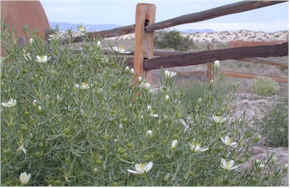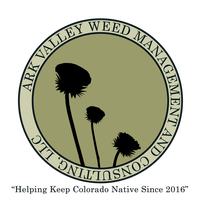African rue
Peganum harmala
Keys to Identification
- The leaves are finely divided in long, narrow segments.
- Flowers are white with five petals.
- This information courtesy of the Colorado Natural Areas Program
Family
Zygophyllaceae (Caltrop)
Other Names
Syrian rue, Harmel shrub
USDA Code
PEHA
Legal Status
Colorado Noxious Weed List A
Identification
Lifecycle
Perennial
Growth form
Forb
Flower
Flowers are white, have five petals, and are borne along the stem in the leaf forks.
Seeds/Fruit
The fruit is a 2 to 4-celled leathery capsule that contains 45 – 60 seeds. Seeds are angular, dark brown with a distinctive smell. Soil seed bank viability period is currently unknown.
Leaves
Leaves are alternate, smooth, and finely divided with long narrow segments. When crushed there is a disagreeable odor
Stems
Mature plants are highly branched and grow 1.5 ft tall and 3-4 ft wide
Roots
Branching reaching to 20 feet deep
Seedling
More information is needed.
Impacts
Agricultural
African rue is toxic to livestock and can replace valuable forage subsequently reducing the productivity of pasture and rangeland.
Ecological
This plant is extremely drought tolerant, and it has expanded into desert rangelands replacing desirable native plants like saltbrush and grasses. It has a competitive advantage over native plants as it germinates earlier in the spring. Most parts of this plant contain allopathic chemicals that retard or prevent the growth of other vegetation.
Habitat and Distribution
General requirements
Adapted to relatively arid environments.
Distribution
Present throughout New Mexico and is reported in Arizona, California, Idaho, Montana, Nevada, Texas, Oregon and Washington (USDA Plant Database).
Historical
Native of northern Africa, through the Middle East to Tibet in Asia. This plant was first recorded in the United States near Deming, New Mexico in 1928.
General requirements
Is adapted to relatively arid environments.
Biology/Ecology
Mode of reproduction
Reproduces both vegetatively and by seeds.
References
USDA, NRCS. 2005. The PLANTS Database, Version 3.5 (http://plants.usda.gov). Data compiled from various sources by Mark W. Skinner. National Plant Data Center, Baton Rouge, LA 70874-4490 USA
Whitson, T.D.(ed.), L.C. Burrill, S.A. Dewey, D.W. Cudney, B.E. Nelson, R.D. Lee, R. Parker. 1996. African rue. Weeds of the West. Western Society of Weed Science, in cooperation with the Western United States Land Grant Universities Cooperative Extension Services, Newark CA. pg. 598.


Photos courtesy of La Plata County

